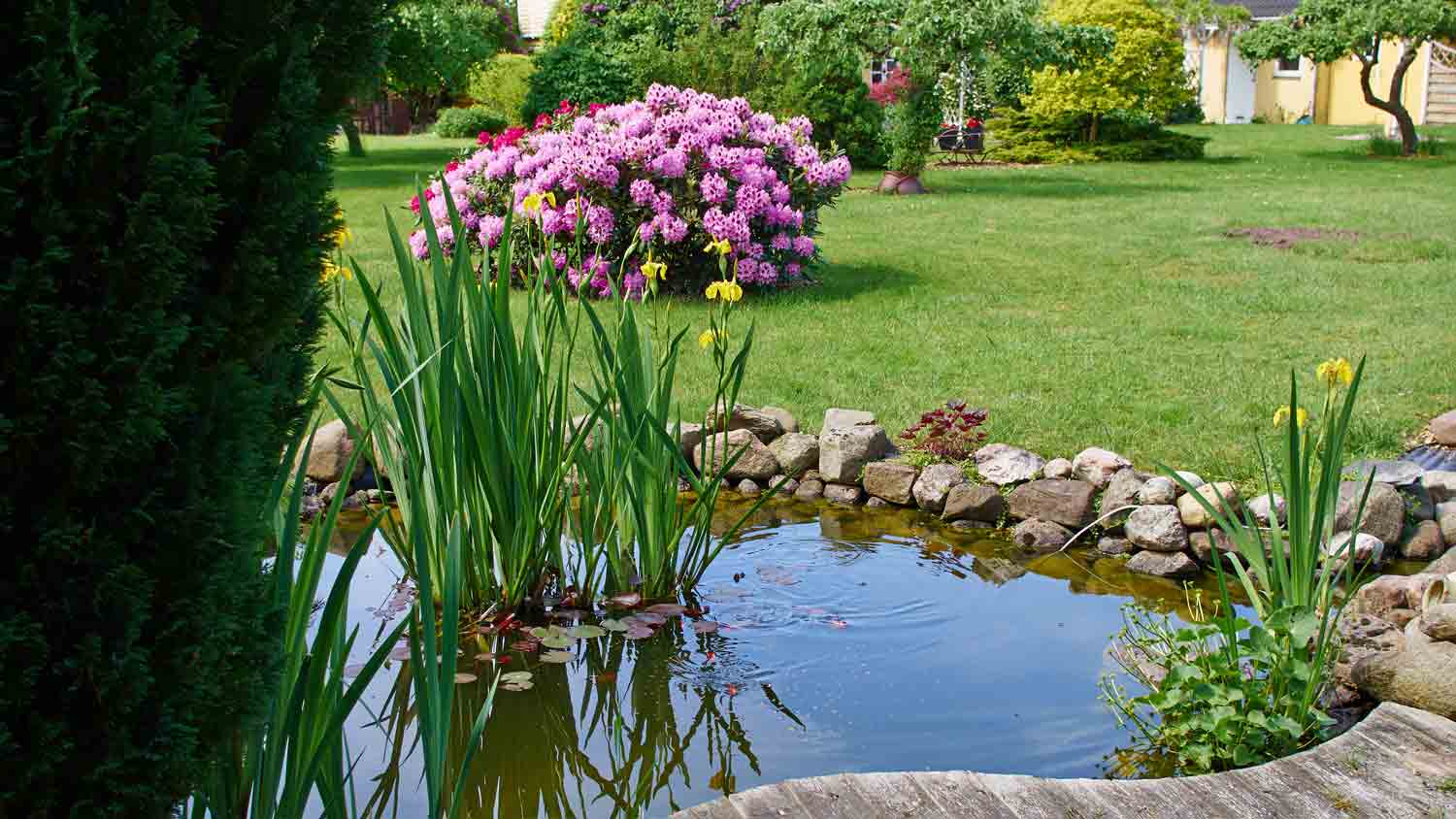
A landscape designer can elevate your outdoor space and bring your vision to life. Use this landscape design cost guide to budget for your next project.
Add playful plumage to your yard
.jpeg)
.jpeg)
Pampas grass is a perennial ornamental grass with fluffy plumage.
It grows best in warm, southern zones, but can thrive up to zone 6.
Pampas grass is invasive in several states and can spread beyond control.
The plants are relatively low maintenance once planted.
Ornamental grasses offer hardy, low-maintenance, and eye-catching additions to your landscape—and pampas grass (Cortaderia selloana) tops many gardeners' list of favorites. Its fluffy white, cream, or pink plumage is easy to recognize, especially since it can grow over 10 feet tall.
Growing pampas grass plants can be tricky, however—particularly because it’s infamous for spreading—so it's important to know how to handle the enthusiastic species before getting started.
Pampas grass is a perennial grass native to zones 7 through 11, but you'll find a few hardier varieties that can withstand colder winters up to zone 6. If you're not sure which USDA zone you live in, zones 6 through 11 spread all the way from New England to the deep south.
While pampas grass loves the high humidity and warm weather, the species is a tough cookie overall. It can withstand periods of drought, salty seaside air, and even counts as a deer-resistant plant.
Here are some other good things to know about buying pampas grass for your lawn.
Most pampas grass varieties can grow between 5 and 10-feet high and equally as wide. While you will find a few dwarfed variations, these still grow as tall as 5 feet. While this works well as a natural privacy fence, keep it in mind if you don't want to block the tulip garden.
Plant pampas grass in an area that receives at least six hours of direct sunlight a day. It can grow in partially shaded areas but will thrive best in a sunny spot.
Pampas grass doesn't need a lot once it's established. Save from a bit of watering early on and some winter pruning—more on this below—grown pampas grass is tough against pests, disease, and drought.
Keep in mind that pampas grass is considered invasive in Hawaii, California, Texas, and several countries. Even if you're allowed to grow pampas grass in your lawn, the plant produces millions of seeds that spread widely and sprout easily.
Important note: Pampas grass is also flammable, especially when dried out in the winter, so avoid planting up against structures of areas of open flame—like the BBQ or fire pit.

When heading to the nursery, you'll have your pick of several pampas grass colors and species with unique traits. Cultivar pampas grass plants grow to different heights, survive in various climates, and even reduce seed spread. Here are some important types to know.
Plumage color: Blush-pink
Northernmost zone: 8
Height: Up to 8 feet tall
Notes: Blooms summer through fall
Plumage color: Yellow and white
Northernmost zone: 8
Height: 4–6 feet tall
Notes: Tightly compact and good for containers
Plumage color: Yellow and white
Northernmost zone: 6
Height: Up to 5 feet tall
Notes: Often sold sterile to reduce spread
Plumage color: Silver and white
Northernmost zone: 6
Height: Up to 7 feet tall
Notes: Bloom in the fall
Pampas grass comes in several stages of growth, from seed to fully formed plants. Whichever you choose, always leave plenty of space between pampas grass and other plants. Let's look at each option.
If you purchase pampas grass pre-grown in a container, you only need to transfer the plant to well-draining soil with at least six hours of direct sunlight. Shake the roots free of compacted dirt after removing the plant from the container and place it in the ground to the height of its root ball.
Moderately water the plant initially after planting and for several weeks after. Once the plant is established in the ground, precipitation will provide enough moisture.
Start pampas grass plants indoors whenever possible when growing them from seed. Place several seeds just below the soil and water moderately. Be sure the planter and soil drain well.
Cover the seeds with plastic planting domes and set them in direct sunlight. Move seedlings to larger containers after about three weeks and transfer them to the garden once they take on a bushy quality.
Pampas grass develops its famous plumage in the later summer and early fall, but it's important to give it time to grow before this happens. Depending on the last frost in your region, plan pampas grass in the ground in spring through early June. You can also start pampas grass from seed in the late winter and several weeks before transplanting outside.
Right before the plumes dry up at the end of the fall, clip a few sprightly plumes to display in a vase on the dining room table.
One of the largest benefits of pampas grass is its resilience with relatively little work. As we mentioned earlier, there's no need to heavily water your pampas grass once it's established in the ground. Even low levels of rain will keep it moist enough to thrive. You also shouldn't need to add fertilizer to your soil, as the plant will grow and even spread in all types of soil.
To encourage more lively plumage, consider pruning your pampas grass at the end of each winter just before the spring. While it may seem extreme, you can cut the grass just 6 to 8 inches above the ground, leaving just the stems to thrive.
Quick note: Wear long sleeves and thick gardening gloves when planting or maintaining these plants. Pampas grass foliage is very sharp and can be painful to handle.
After pruning your pampas grass low to the ground, you'll have a better view of the size of the plant and how to access its roots. Use a spade to delicately remove the root ball from the ground and fill in the hole. Separate the root ball and plant at least 6 feet from one another in new spots.
It's exciting to explore designing your landscape with the playful plumage of pampas grass. But due to its invasive and spiky qualities, keep the name of a landscaper near you on hand to help if you have questions.
From average costs to expert advice, get all the answers you need to get your job done.

A landscape designer can elevate your outdoor space and bring your vision to life. Use this landscape design cost guide to budget for your next project.
.jpg?impolicy=leadImage)
Landscaping your yard adds curb appeal and expands your home’s living space into the outdoors. Learn how much landscaping costs for various projects.

Looking to step up your golf game without leaving your property? This guide details backyard putting green costs to help you decide if this project is worth it.

When building a pond, you’ll have to choose a pond liner, which come in various materials and sizes. So, what size pond liner do you need? Let’s break it down.

While similar, comparing dirt versus soil comes down to what's inside the material, its usefulness, and how it performs, depending on how you intend to use it.

Did you know that the USDA published a new Plant Hardiness Zone Map in 2023? That may leave you wondering, “What hardiness zone am I in?” Read on to find out.